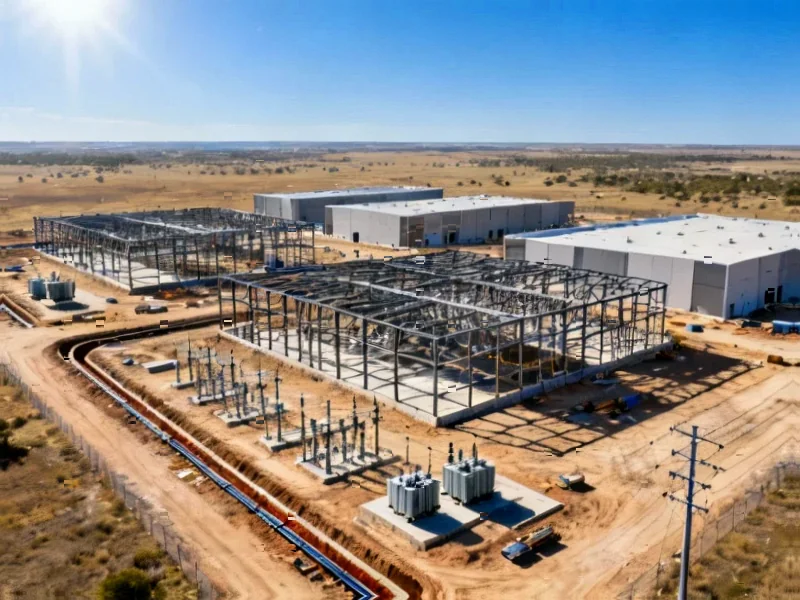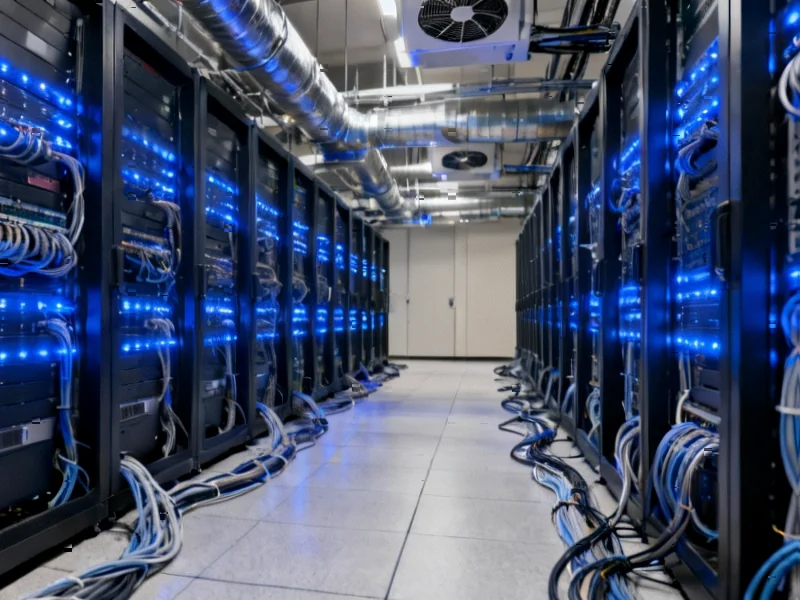According to Utility Dive, Entergy’s data center customer pipeline grew by 2 GW last quarter to reach 7-12 GW total, with the utility securing 4.5 GW of new power generation equipment to serve expected load growth through 2029. The company reported profit increasing from $645 million to $694 million year-over-year and plans $41 billion in capital spending through 2029, driven by major agreements with Meta and Google including Meta’s 2-GW campus in northeastern Louisiana and Google’s 1,000-acre data center in Arkansas. Despite these massive investments, renewables comprised just 3% of Entergy’s 24-GW generation portfolio in December 2024, with fossil fuels dominating both current capacity and planned additions. This gas-heavy approach raises critical questions about the utility’s long-term strategy.
The Gas Generation Gamble
Entergy’s commitment to natural gas represents a significant strategic bet that could either pay off handsomely or become stranded assets in a rapidly decarbonizing economy. While gas plants offer reliable, dispatchable power that data centers require for 24/7 operations, they lock in emissions for decades and face growing regulatory pressure. The Texas Public Utility Commission’s imposition of a $2.4 billion “hard cap” on recent gas projects signals that regulators are already concerned about cost overruns and ratepayer protection. This regulatory skepticism could intensify as climate policies evolve, potentially leaving Entergy with expensive assets that become uneconomic before their planned lifespan.
The Renewables Reality Check
Despite executive optimism about clean energy, the numbers reveal a stark imbalance. With only 3% renewable penetration currently and just over 2 GW of clean energy projects in development—compared to 7-12 GW of data center demand—Entergy’s renewable ambitions appear dramatically insufficient to meet either customer sustainability demands or climate targets. The company’s plan to own 1.5 GW of solar capacity while procuring only 570 MW through power purchase agreements suggests a cautious, incremental approach that may not scale quickly enough. Data center operators like Google and Meta have aggressive carbon-free energy goals that could eventually conflict with Entergy’s fossil fuel dependency.
The Carbon Capture Conundrum
CEO Drew Marsh’s mention of future carbon capture investments represents a significant technological and financial gamble. Carbon capture technology remains expensive and unproven at the scale needed for Entergy’s massive gas fleet. The utility’s reference to RFPs in Mississippi and Texas suggests early exploration rather than concrete implementation plans. Historically, carbon capture projects have faced substantial cost overruns and technical challenges, raising questions about whether this represents a viable decarbonization pathway or merely a justification for continued fossil fuel investment. Ratepayers could ultimately bear the burden if these technologies fail to deliver promised emissions reductions at reasonable costs.
Nuclear’s Uncertain Timeline
While Entergy executives expressed excitement about nuclear developments, the absence of any new-build nuclear projects in their current plans speaks volumes. The $80 billion national nuclear partnership and various state-level initiatives represent long-term possibilities rather than near-term solutions. Nuclear projects typically face decade-long development timelines and massive cost uncertainties, making them poorly suited to address the immediate data center demand surge Entergy faces. The 45-MW capacity uprate at Waterford 3, while meaningful, represents a tiny fraction of the 7-12 GW data center pipeline and won’t significantly alter the utility’s generation mix.
Transmission Infrastructure Challenges
The $200 million Texas grant for grid hardening and various transmission projects highlight another critical challenge: moving all this new power to where it’s needed. Data centers concentrate massive electricity demand in specific locations, requiring substantial transmission upgrades that often face local opposition and regulatory hurdles. Entergy’s planned 145-mile SETEX line and other transmission investments represent essential but potentially contentious infrastructure that could delay the very data center growth the utility is counting on. Historical precedent shows that major transmission projects frequently encounter delays and cost increases that could impact Entergy’s ambitious timeline.
The Shifting Regulatory Landscape
Entergy operates across four states with varying energy policies and political environments, creating a complex regulatory mosaic that could complicate its unified strategy. While Arkansas recently streamlined energy project permitting, other states might impose stricter emissions requirements or cost controls as climate concerns intensify. The Texas PUC’s hard cap decision demonstrates that even in traditionally utility-friendly jurisdictions, regulators are becoming more assertive about protecting ratepayers from potentially imprudent investments. This evolving regulatory environment creates significant uncertainty for Entergy’s $41 billion capital plan.
Emerging Competitive Threats
Entergy’s traditional utility model faces disruption from multiple fronts. Large tech companies increasingly seek direct access to clean energy through corporate PPAs and may eventually explore self-generation or microgrid solutions if utilities cannot meet their sustainability requirements. Meanwhile, emerging technologies like advanced geothermal, long-duration storage, and distributed energy resources could provide alternatives to centralized gas plants faster than anticipated. Entergy’s gas-heavy bet assumes continued technological stagnation in clean energy alternatives—a risky assumption given the rapid pace of energy innovation.
Entergy’s strategy represents a high-stakes calculation that gas plants with future carbon capture will prove more reliable and cost-effective than accelerating renewable deployment. While this approach may satisfy immediate data center demand, it creates substantial long-term risks in a world increasingly focused on decarbonization. The utility’s success will depend on executing complex technological deployments, navigating evolving regulations, and managing costs in an environment where missteps could prove extraordinarily expensive for both shareholders and ratepayers.




